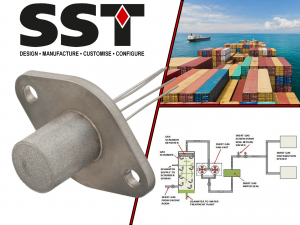Applications
- Applications
- Refrigerated, Modified and Controlled Atmosphere Monitoring
- Leak Detection Switches in Telecommunication Enclosures
- Boiler Combustion Efficiency
- Complete Customised Oxygen Sensor Solutions
- Optical Liquid Level Switches That Can Be Used in Almost Any Liquid
- Oxygen Sensors for On-Board Inert Gas Generation Systems
- Marine Inerting Systems
- Tank or Vessel Level Control Monitoring
- Protecting Robotic Process Automation Systems
- Gas Nitriding and O2 Measurement
SST sell thousands of oxygen sensors per year into the EU and US aerospace market for controlling the level of oxygen in the fuel tanks of aircraft to substantially reduce the possibility of lightening static electricity or other events igniting fuel vapours in an aircraft fuel tank. These OBIGGS (On-board Inert Gas Generation Systems) were developed as a result of the TWA800 disaster in 1996.

For this reason, SST initiated communication between inert gas system manufacturers for the marine industry as they use a similar process in order to keep the atmosphere within non-explosive limits. To do this, it is necessary to check and control the oxygen and hydrocarbon gas content in the fuel and cargo tanks.
Possibly the best solutions for this is Marine Inerting Systems.
Regulation requires ships above 20,000 dwt carrying crude oil, hydrocarbon gases or refined oil products to have inert gas systems installed. However, the International Maritime Organisation Sub Committee on Fire Protection presented a draft of SOLAS (Safety of Life at Sea) amendments to the Maritime Safety Committee for consent and implementation of actions to prevent fire and explosion on oil and chemical tankers transporting low-flashpoint (less than 60⁰C) cargoes.
The new amendments to SOLAS regulations II-2/4.5.5 and II 2/16.3.3,  which took effect on January 1st 2016, stated that an inert gas system gas to be fitted on all new oil and chemical tankers of 8,000 dwt and above (when transporting low flash-point cargoes of less than 60⁰C).
which took effect on January 1st 2016, stated that an inert gas system gas to be fitted on all new oil and chemical tankers of 8,000 dwt and above (when transporting low flash-point cargoes of less than 60⁰C).
In order to create an inert atmosphere, or in other words an atmosphere that is safe from explosion or fire, the oxygen content must be below 5%. SST’s oxygen sensors allow their customers to measure, and thereby control the oxygen percentage.
